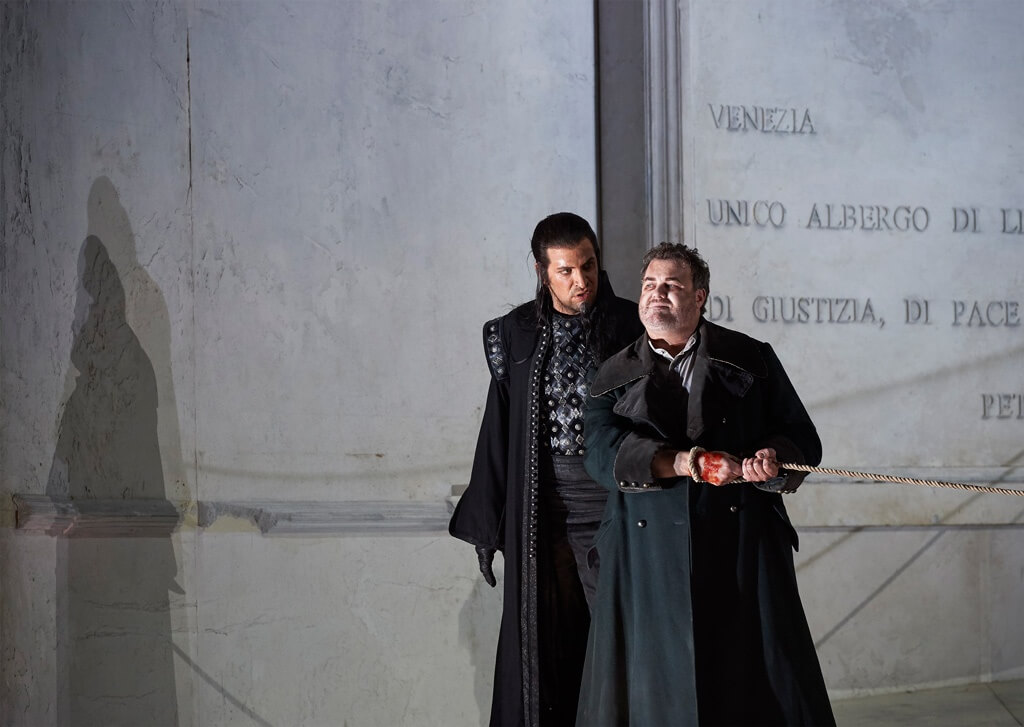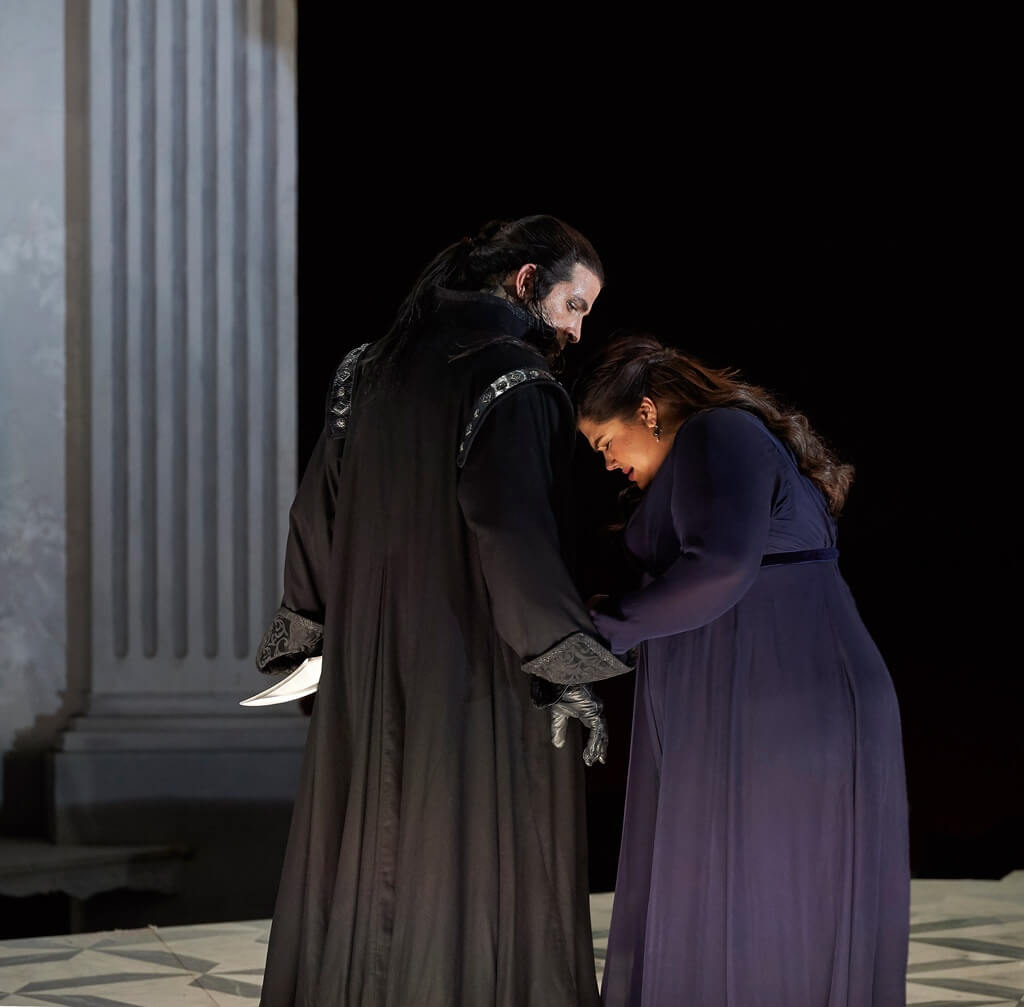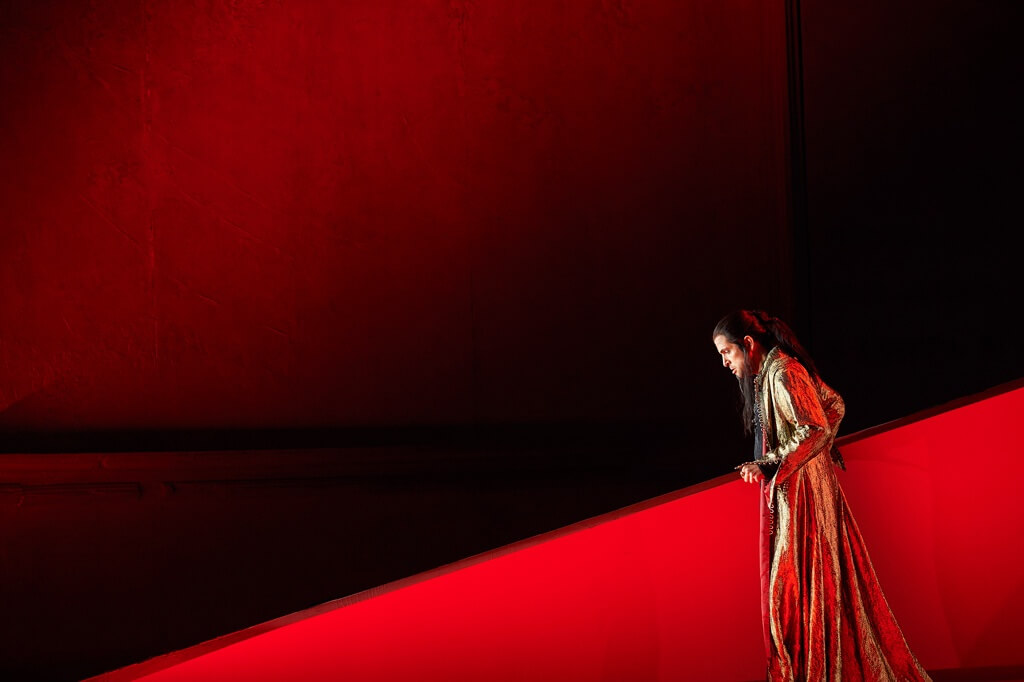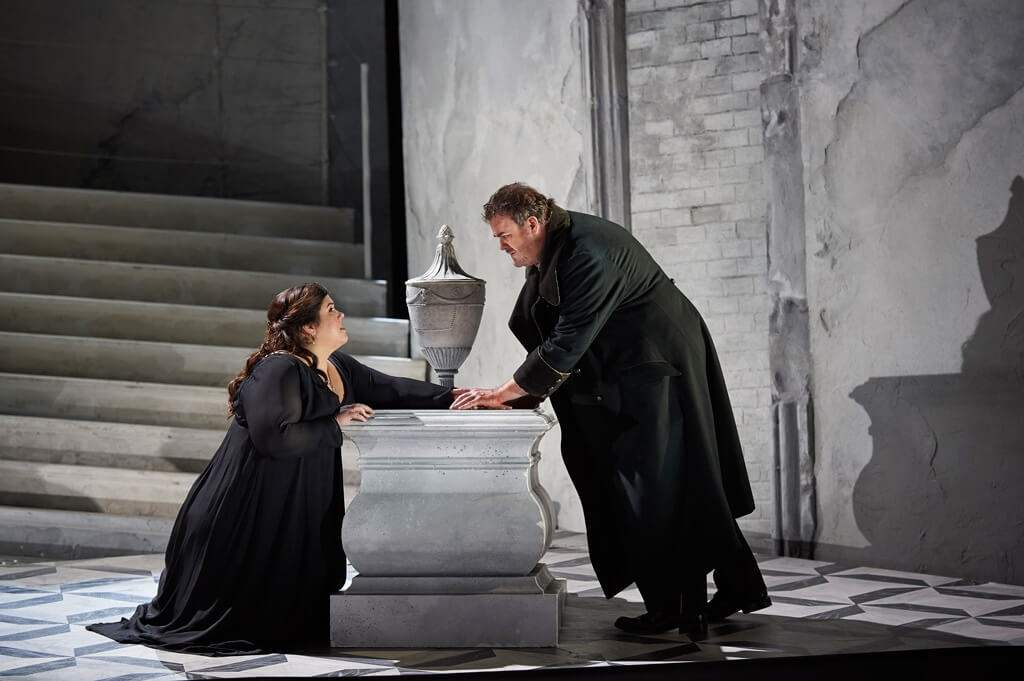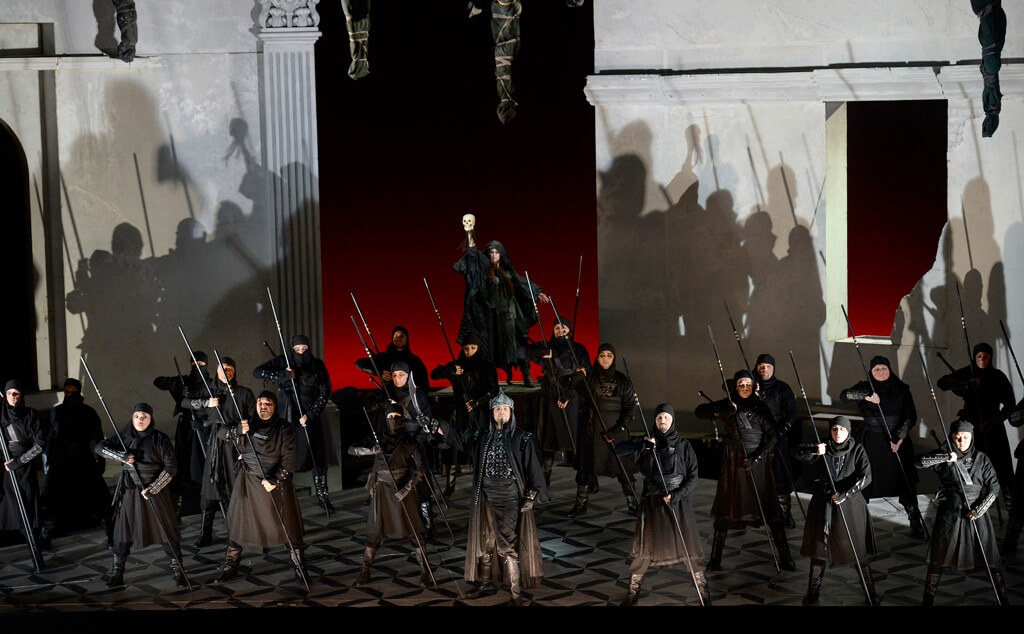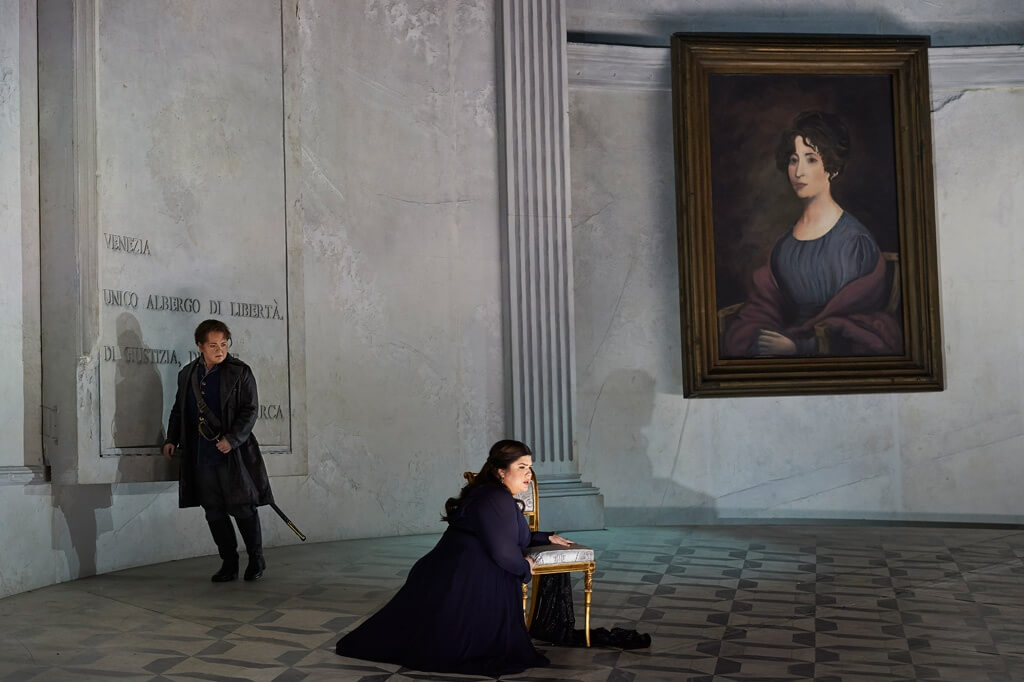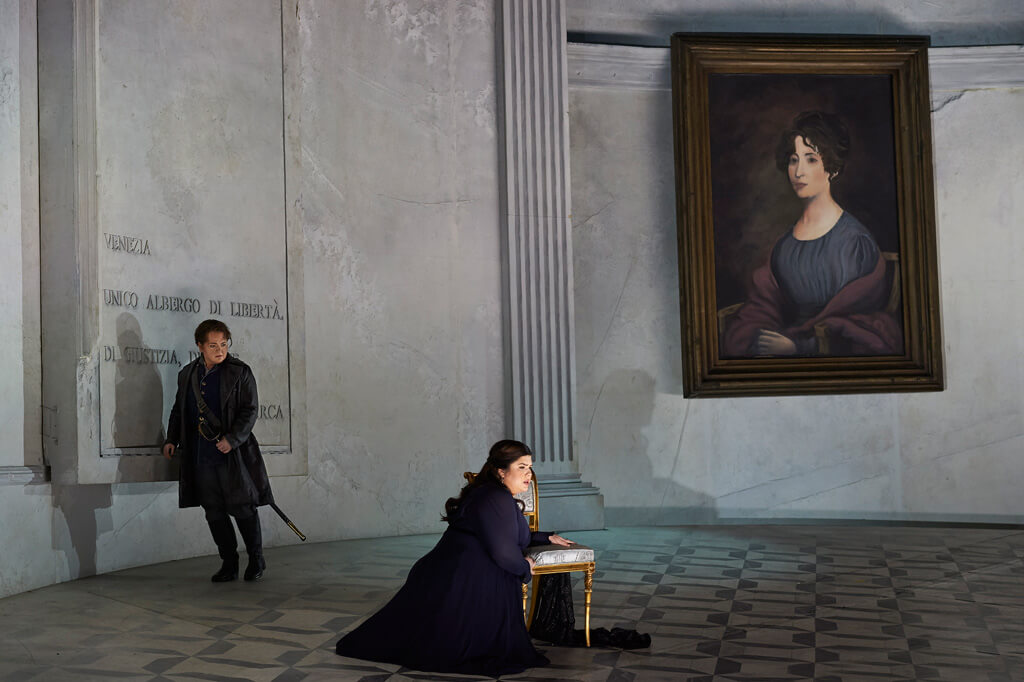
Rossini’s Maometto II: The Canadian Opera Company. Harry Bicket (conductor), David Laera (choreographer), David Alden (director). At the Four Seasons Centre until May 14. coc.ca
The final production of the Canadian Opera Company’s 2015-16 season, a Rossini rarity, Maometto II, opened last evening. You can be forgiven if you ask “Maometto who?” Unless you are a regular at the summer Rossini Festival in Pesaro, Italy, this piece is probably new to you. I was lucky enough to have seen it in the Santa Fe Opera in the summer of 2012. It is that very production that is being staged in Toronto, with almost the same cast — Luca Pisaroni (Maometto), Leah Crocetto (Anna), and Bruce Sledge (Erisso). The only new principal is Elizabeth DeShong (Calbo) replacing Patricia Bardon. English conductor Harry Bicket is the conductor, replacing the then SFO music director Frederic Chaslin.
Like other “serious” Rossini operas such as William Tell or Otello, Maometto secondo is a challenging piece to stage. A complex and rather improbable story, with lots of twists and turns in the story line — par for the course in opera, you ask? Perhaps, but a lot of the dramatic action is only detailed as narratives and next to impossible to stage. Even David Alden, known for his unconventional and sometimes radical directorial visions, is taking a middle of the road approach in this production. Not that I’m complaining, mind you…
Set in the 15th century and the war between the Turks and the Venetians, the title Maometto is based on the real character of Ottoman Sultan Mehmed the Second. The love story between Maometto and Anna is I believe largely the construction of the librettist Cesare della Valle. The crux of this piece is one of cultural and religious conflict between East (Muslims) and West (Christians), a decidedly uncomfortable topic given the current world politics. How this plays out in the consciousness of the audience remains to be seen.

As productions go, this one with sets and costumes by Jon Morrell and lighting by Duane Schuler is quite beautiful. Dominating the stage are two movable, curved walls in a sort of distressed Italian Baroque style. Not much else, except for a table, and a bunch of busts and urns containing the ashes of Erisso’s wife are brought on and off. On the right wall is an enormous portrait and a trap door on the left that opens up to reveal a very impressive set of black horses. Despite these visual points of interest, the stage action is quite static, with the principals mostly resorting to stand and sing.
True, but what singing! Seen on opening night (April 29) the cast was uniformly strong. Italian bass-baritone Luca Pisaroni offered robust tone and vivid acting in the title role. His music requires the typical Rossini ornamentation, not the easiest skill for a bass! He did beautifully in his florid Act One aria. Tall and slim, he also has the requisite dramatic gravitas. Leah Crocetto (Anna) has the biggest sing among the principals, and she has the stamina and beauty of tone to do it justice. Her voice does have a cutting edge, which was in evidence in Act One. Happily she softened her sound in Act Two and her big scena was wonderful.
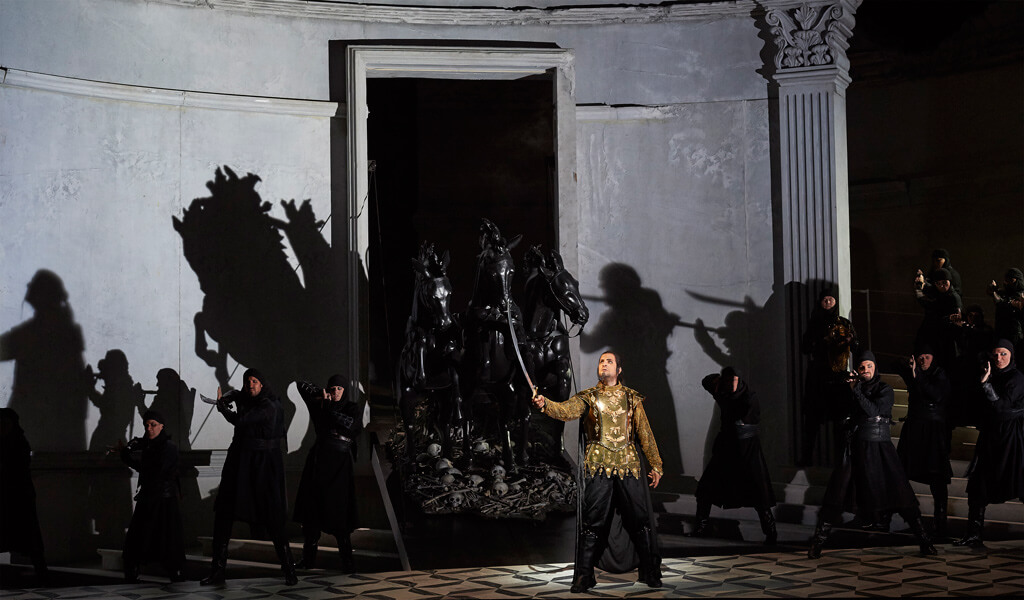
Bruce Sledge is a lyric-turned-spinto tenor ideal in the bel canto repertoire. As Erisso, his clarion instrument with its great top was a pleasure. From a distance, his imposing size and facial features bear an uncanny resemblance to another great tenor of today, the Maltese Joseph Calleja. But it was the fourth principal, mezzo Elizabeth DeShong, who virtually stole the show as Calbo. Her Act Two aria with its two-plus octave range and incredible fioritura brought the house down, the first true ovation of the evening. That doesn’t mean the singing before that wasn’t good. Given the new through-composed style adopted by Rossini for this work, there are no pauses between numbers, particularly in Act One.
Harry Bicket returns to the COC after his very successful Hercules. Primarily known as a baroque and classical specialist, his marvellous reading of Maometto makes clear that he’s much more than “just” an early music conductor. The COC orchestra responded well to him. The chorus is extremely important in this work, and both the men and women’s chorus performed admirably, despite the rumoured insufficient rehearsal time. At three-and-a-half-hours including one intermission, it’s a bit of a marathon, but the piece went by in a flash. Highly recommended.
#LUDWIGVAN
Want more updates on Toronto-centric classical music news and reviews before anyone else finds out? Get our exclusive newsletter here and follow us on Facebook for all the latest.

